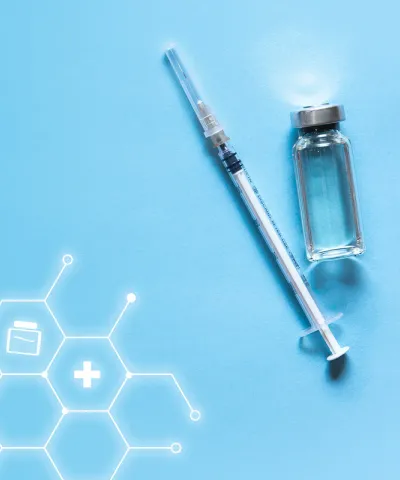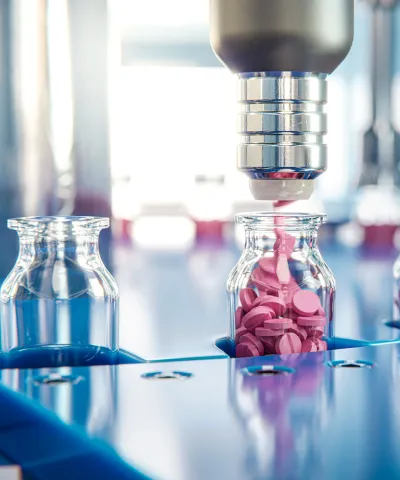The tremendous loss of life and unprecedented disruption in the daily activities of the entire world will be a truly milestone event in our lifetimes. While many on the frontlines of this crisis have little time to think about what life will look like after COVID-19, for many of us, looking forward to the future is a welcome manifestation of hope. We can only begin to imagine the myriad of changes that will take place after this virus is vanquished – from changes to how we interact socially, how we spend our time, and how we spend our money.
Change is also inevitable for how businesses and markets run, and we certainly would expect changes within the healthcare industry as a result of this pandemic. In the spirit of hope for the post-COVID-19 world, this article takes a moment to look forward, and provides eight predictions for the future of the healthcare industry.
- The rise of telemedicine: One of the profound impacts of COVID-19 is the fact that hundreds of millions of people around the world have suddenly been forced to work from home, leading to a heavy reliance on videoconferencing and file sharing like never before. This phenomenon has also impacted the healthcare industry, as non-emergent patients have been asked to stay away from healthcare facilities to prevent the spread of the virus. Even so, patients still have all the healthcare needs and questions that they had before COVID-19, and many healthcare providers have turned to telemedicine to try and meet at least some of those needs. In the U.S., many states have moved to relax the restrictions that posed obstacles to telemedicine, and insurers have adjusted payment systems to make sure that providers can be paid for telemedicine consultations. There is certainly a lot of value in the face-to-face conversations that take place between providers and patients, and there are obviously many diagnostic procedures that cannot be done over videoconference. At the same time, one can certainly be impressed with the efficiency and convenience of talking to your doctor from the comfort of your own home – without having to travel, wait in one room, and then often move to another room, before finally seeing a physician for a few minutes. Time will tell how widespread telemedicine becomes in the post-COVID-19 future, but it is safe to say it is certain to grow in importance.
- Increased focus on diagnostics: As was penned by my colleagues, this pandemic has certainly brought a new focus on diagnostic testing. While the availability of tests has been the subject of political spin, there should be little debate that better testing would have helped to slow the spread of the virus and lessen the impact. For many years, the efficiency, accuracy, and sensitivity of centralized labs have been without question. However, in this crisis, the inherent time lag of centralized laboratory testing has been exposed as a potentially fatal flaw in the system. Greater availability of rapid point-of-care diagnostics that could have been deployed in more numerous locations would have helped to more quickly identify those infected, leading to more efficient quarantining of those individuals and a slower spread of the virus.
- More efficient and scalable technologies: In addition to scrutiny over the availability of tests, there has been significant discussion over the struggle for hospitals to secure enough ventilators. When a hospital only needs 25 ventilators, they can afford to spend as much as $50,000 to purchase a ventilator that is going to have the absolute highest standard of efficacy and reliability. But, what happens when a hospital needs 50, 100, or even more ventilators, as we see currently given this pandemic? Not only is it cost-prohibitive to purchase 100 of those $50,000 ventilators – but the production cycle for such a sophisticated piece of equipment also presents a problem. Might there be a more cost-effective solution with higher scalability? We see some of this type of innovation already in developing markets as they look to find ways to treat patients in a much more cost-effective manner than is usually seen today in developed markets. Will we see more disruptive technologies that look to deliver high quality, if not the highest quality, healthcare at a fraction of the cost?
- Elevation of the importance of vaccines: When it comes to the cost-benefit of healthcare interventions, vaccines have always been a class unto their own. Given their relatively low cost, and the incredible health benefits available through the prevention of disease, vaccines offer many opportunities to save money for the healthcare system. However, one can’t help but get the feeling that vaccines have somewhat been taken for granted in recent years, and have almost been treated like a commodity. As the worldwide search for a COVID-19 vaccine proceeds at breakneck speed, we should expect to see a renewed focus on vaccine research after the pandemic is over – particularly the ability to identify vaccines for new pathogens.
- Research into anti-virals: “An ounce of prevention is worth a pound of cure” is sage advice, but in those instances where a vaccine is not possible or not practical, we need better therapies to deal with viral infections. While significant advances have been made in the areas of HIV and Hepatitis C, much more research is necessary to deal with other viral threats. A renewed focus on this therapeutic area would be a welcomed outcome of the COVID-19 crisis.
- Stakeholder engagement through digital communication: The COVID-19 crisis has completely eliminated the ability of healthcare manufacturers’ salesforces to visit healthcare providers and educate them on new products, research, and services. While the crisis will end sometime, it may take even longer before healthcare facilities will open themselves up to allowing non-healthcare providers to visit with physicians due to the unnecessary risk. Therefore, it will be absolutely critical for healthcare manufacturers to find new ways to interact with their key stakeholders through digital means. In addition to interactions with providers, finding new and better ways for manufacturers to interact with and engage with patients will be very important post-COVID-19.
- Healthcare budget crunch: In response to the pandemic, governments across the globe have been pumping trillions of dollars into the global economy to try and mitigate the economic impact of the world-wide standstill from COVID-19. However, once this crisis is over, the “piper will still have to be paid”, which means governments will be facing a severe budget crunch. Given the fact that healthcare is one of the most sizable line items in most countries’ budgets, governments and regulators will be searching for ways to generate meaningful cost savings in the provision of healthcare services. We should expect significant cost pressure on the prices of pharmaceuticals and medical devices. Typically, the most efficient way to generate cost pressure is through a reduction in options – offering only one or two choices for physicians and patients and asking manufacturers to bid for all or most of that business. Manufacturers will need to ensure that they have not only the absolutely best-in-class products, but also the best in class evidence, value demonstration, and negotiation skills in order to succeed in what is likely to become a hypercompetitive market.
- Fewer therapeutic options: The COVID-19 crisis has caused a significant proportion of ongoing clinical research to grind to a halt. It’s impossible to say when manufacturers will feel comfortable enrolling patients in clinical trials again, but it wouldn’t be surprising for this halt to last six months or more. The decision to invest in a clinical trial for a new or already marketed product is a complicated strategic decision that very often involves careful considerations of timing, relative to competitors, but also with the loss of patent exclusivity. The return on investment for a trial of a drug with two years of patent life remaining is very different than the return on investment for a trial of a drug with only one year of patent life remaining. The delays caused by COVID-19 are very likely to cause healthcare manufacturers to revisit their clinical trial programs and re-prioritize based on new timings. This is very likely to mean the end of a number of programs that no longer make sense – especially given the aforementioned hypercompetitive nature expected of the future healthcare market.
As most of the world remains sheltered in place and awaits the end of this crisis, we cannot help but wonder what the world will look like once we are able to return to “normal”. But, what will “normal” look like post-COVID-19? While some or all of these predictions may not end up coming to fruition, companies that are able to prepare effectively for the post-COVID-19 world will be best positioned to become highly successful as true innovators in the new healthcare marketplace.








